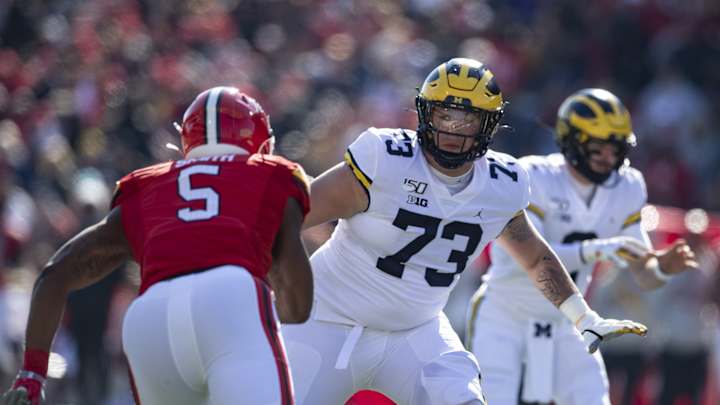Does Arm Length Really Matter for NFL Offensive Tackles?

One of the most talked-about topics in Kansas City over the past few weeks has been the arm length of the offensive tackle prospects in this year's NFL Draft. With shorter-than-usual measurements coming in from Pro Days across the country, the question arises: does the arm length of an offensive tackle really matter?
Former NFL head coach Jim Mora Jr. joined me on today's Roughing the Kicker podcast as we had a conversation about the Chiefs' tackle situation and the crop of talent Kansas City could be choosing from in the 2021 NFL Draft.
When it comes to arm length in this year's class, Mora said that it is something that matters on an offensive line, especially at tackle, and explained why this conversation has risen to the forefront.
"It does make a difference," Mora said. "It sounds like something very trivial but it's very important because you've got to do a couple of things as an offensive tackle versus pass rush defensive ends. No. 1 is you've got to keep them away from the quarterback, obviously. In order to do that, you've got to be able to widen the edge. The way you widen the edge is with length. Length doesn't always come in the form of long arms. It comes in the form of long legs, long torso, but it is your arms that keep the pass rusher away from your body."
According to Arrowhead Pride's Kent Swanson, the average arm length of a tackle for head coach Andy Reid is 34 1/4 inches. When comparing that to the top 20 tackles in this year's draft, only six meet or exceed that measurement.
Arm length won't make or break a prospect, though, Mora said. While it's certainly an important trait, there are other qualities for offensive linemen that should be taken into consideration.
"It's not the most important thing," Mora said. "If you said I could have a guy with 35-inch arms but he had average feet and average lateral quickness then I would say, 'Well, I don't know, what's my alternative?' Then say, 'OK, you can have a guy with 33 1/2-inch arms with great lateral quickness.' I'd take the 33 1/2-inch arms with lateral quickness every single day. But the thing about the NFL is we're always talking fractions of inches in a difference between a play being made and a play not being made."
Joe Thomas, Joe Staley, Jason Peters, etc.. all had "short arms". It's a tired discussion. It's about how you use them, rather than the length. https://t.co/n4dR5o0xSb
— Geoff Schwartz (@geoffschwartz) April 2, 2021
The Chiefs are known for having "types" when it comes to the players they draft, and there is a reason for that. Reid knows what he likes, and when they stick to those "prototypes" — whether on offense or defense — they know what to expect.
As the draft inches closer and the Chiefs' time on the clock approaches, Mora said there will always be exceptions to certain "rules" teams have, but they have to be careful when it comes to allowing anomalies.
"There's always going to be exceptions," Mora said. "Height exceptions, weight exceptions, speed exceptions, strength exceptions. There are going to be exceptions, but if you start building your team through exceptions, then you become a poor team very, very quick. So you've got to be careful how often you drop your standards. If you do drop your standards, then that player better have other traits so redeeming that there's no doubt he can overcome the exception."
Read More: The Pros and Cons of One-Year Contracts

Tucker D. Franklin is an alumnus of Northwest Missouri State University, majoring in sports media and graduating in 2019. Tucker was previously the sports editor for The Maryville Forum and is now the editor-in-chief of Inside the Royals as well as the deputy editor for Arrowhead Report on SI.com and the host of the Roughing the Kicker Chiefs podcast. Follow Tucker on Twitter @tuckerdfranklin.
Follow tuckerdfranklin